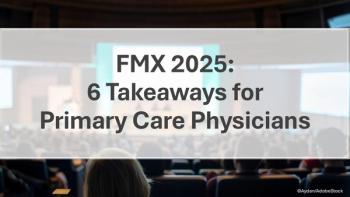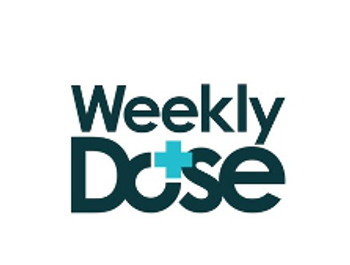
Alzheimer's Prevalence Tops Five Million in U.S.
CHICAGO -- More than five million older Americans are living with Alzheimer's disease or other dementias, a 10% increase in prevalence from just five years ago, according to an estimate commissioned by the Alzheimer's Association.
CHICAGO, March 20 -- More than five million older Americans are living with Alzheimer's disease or other dementias, a 10% increase in prevalence from just five years ago, according to an estimate commissioned by the Alzheimer's Association.
In its 2007 Alzheimer's Facts and Figures, the association estimated that 2.4 million people age from the ages of 75 to 84 years -- 19% of the all U.S. adults in this age range -- have Alzheimer's.
Among Americans ages 85 and older, an estimated 42%, or 2.2 million people, are living with dementia, the report stated.
Alzheimer's Association estimated that there are 300,000 Americans ages 65 to 74 with Alzheimer's (2% of the U.S. population for this age range).
There are approximately 500,000 Americans younger than 65 with Alzheimer's or another dementia. It is estimated that at least 200,000 of these people younger than 65 have early-onset Alzheimer's
The other early-onset dementia cases may be attributable to Lewy body disease, frontotemporal disease, normal pressure hydrocephalus, Parkinson's disease, or Creutzfeldt-Jakob, the report said.
The prevalence estimates were derived primarily from a single Chicago research team's studies in 2003 that were extrapolated to 2007, at the request of the Alzheimer's Association.
"The dramatic rise in Alzheimer's underscores that this disease has the ability to undermine the entire U.S. healthcare system," asserted Stephen McConnell, Ph.D., the vice president of advocacy and public policy for the Alzheimer's Association, in a statement. "Looking just at Medicare and Medicaid, if we could find an intervention that could delay onset or slow progression of the disease, in short order spending on Alzheimer's could decline by more than billion, with even larger savings every year thereafter."
Other findings in the study included:
- Deaths attributable to Alzheimer's disease increased 32.8% from 2000 to 2004. In contrast, deaths from heart disease, breast and prostate cancers and stroke all declined over the same period.
- Direct and indirect costs of Alzheimer's and other dementias amount to more than billion annually.
- Medicare spent billion on beneficiaries with Alzheimer's and other dementias in 2005, a figure that is projected to more than double to billion by 2015.
- Medical costs associated with Alzheimer's disease and co-morbidities such as coronary artery disease or diabetes are double those of people with these conditions but without dementia. About 60% of Medicare beneficiaries with Alzheimer's disease 65 and over have hypertension, and 30% have coronary artery disease. About 95% of such patients have at least one co-morbidity, the reports authors stated.
The report also contained a special section on the burdens of caregiving, noting that nearly 10 million Americans care for a person with Alzheimer's or other dementia, and about one-third of the caregivers are 60 or older.
Unpaid caregivers provided an estimated 8.5 billion hours of care, valued at nearly billion in 2005.
"A million of these caregivers in California, for example, provided an estimated .5 billion of care that year," the report noted. "Even Rhode Island, the smallest state, had almost 37,000 caregivers of people with Alzheimer's and other dementias, and those caregivers provided 32 million hours of care worth .7 million."
In a state-by-state breakdown of prevalence projected out to 2010, only New York and the District of Columbia are expected to see declines in residents living with Alzheimer's disease compared with the year 2000. On the other end of the spectrum, Colorado and Alaska are predicted to experience a 47% increase, followed closely by Utah and Wyoming.
The Alzheimer's Association said its national and state prevalence estinates were derived primarily from studies published in 2003 conducted by a single team of researchers from the Rush Institute on Healthy Aging and the Rush Alzheimer's Disease Center in Chicago, augmented by data from the CDC in Atlanta.
The Chicago research team, the association said, analyzed the incidence of Alzheimer's disease among residents age 65 and over in a biracial Chicago community, consisting of three adjacent neighborhoods (Hebert et al., 2003). The residents were studied over a four-year period. Seventy-nine percent of all community residents age 65 and over participated in a baseline in-home interview. Data collection consisted of the in-home interview for all participants and a diagnostic evaluation for a stratified random sample of the participants.
"Incidence of Alzheimer's disease was measured in 3,838 persons free of Alzheimer's at baseline, and 835 persons had a diagnostic evaluation for Alzheimer's. The incidence figures were converted to prevalence estimates, adjusted for education and other factors, and applied to U.S. Census Bureau population figures for the year 2000 and U.S. Census Bureau projections for the years 2010, 2020, 2030, 2040 and 2050 (Hebert et al. 2003)."
"The researchers calculated the prevalence of Alzheimer's disease in each state by combining the incidence figures from the Chicago study with U. S. Census Bureau figures for the population of the state in 2000, U.S. Census Bureau projections for the state for 2010, and state-specific adjustments for gender, race, education, and mortality (Hebert et al., 2004)."
The association said that in early 2007 at its request the researchers calculated the national prevalence of Alzheimer's disease in people age 65 and over for that year, using linear extrapolation from their previous published estimates for 2000 and 2010.
"Additional incidence figures came from a published study of the incidence of Alzheimer's disease in stratified random samples of residents age 65 and over in east Boston (Hebert et al., 2001). Prevalence figures for people under age 65 come from a 2006 Alzheimer's Association report (Alzheimer's Association, 2006) and are based on an analysis of available data from the Health and Retirement Study and other published articles discussed in detail in the report."
Newsletter
Enhance your clinical practice with the Patient Care newsletter, offering the latest evidence-based guidelines, diagnostic insights, and treatment strategies for primary care physicians.































































































































































































































































































